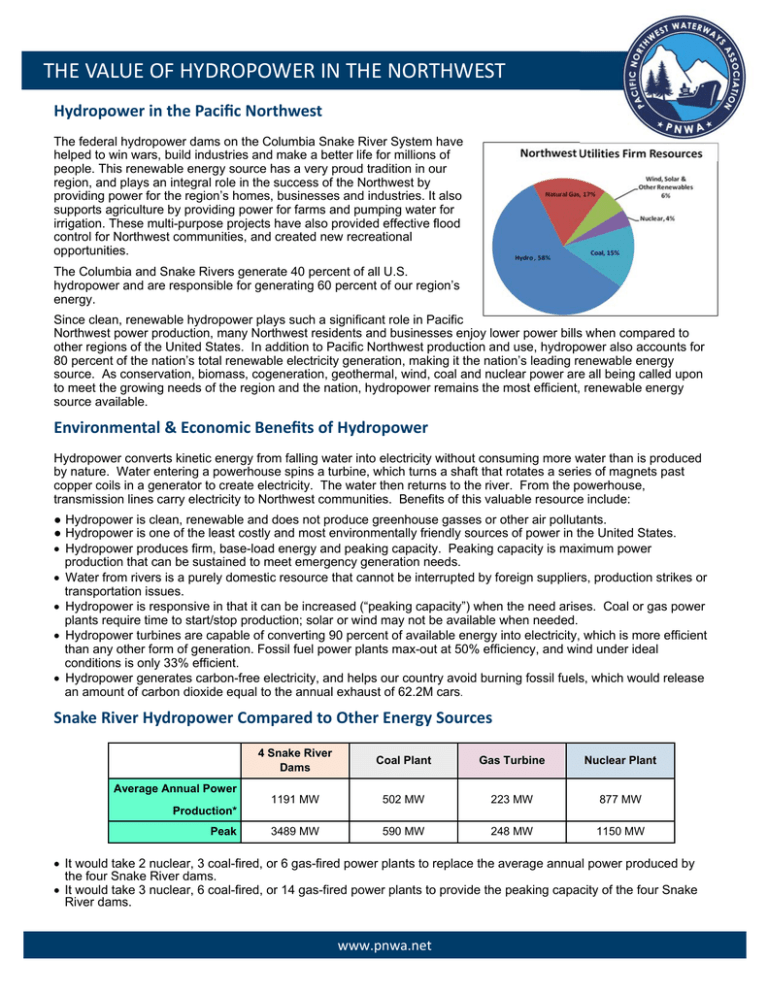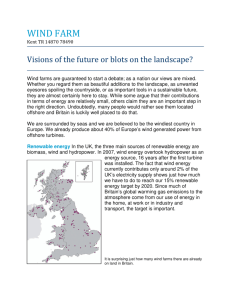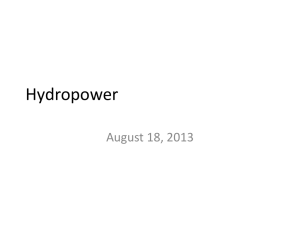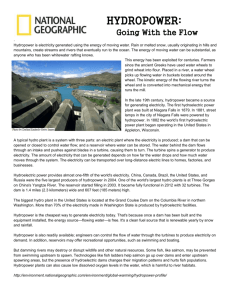THE VALUE OF HYDROPOWER IN THE NORTHWEST
advertisement

THE VALUE OF HYDROPOWER IN THE NORTHWEST Hydropower in the Pacific Northwest The federal hydropower dams on the Columbia Snake River System have helped to win wars, build industries and make a better life for millions of people. This renewable energy source has a very proud tradition in our region, and plays an integral role in the success of the Northwest by providing power for the region’s homes, businesses and industries. It also supports agriculture by providing power for farms and pumping water for irrigation. These multi-purpose projects have also provided effective flood control for Northwest communities, and created new recreational opportunities. The Columbia and Snake Rivers generate 40 percent of all U.S. hydropower and are responsible for generating 60 percent of our region’s energy. Since clean, renewable hydropower plays such a significant role in Pacific Northwest power production, many Northwest residents and businesses enjoy lower power bills when compared to other regions of the United States. In addition to Pacific Northwest production and use, hydropower also accounts for 80 percent of the nation’s total renewable electricity generation, making it the nation’s leading renewable energy source. As conservation, biomass, cogeneration, geothermal, wind, coal and nuclear power are all being called upon to meet the growing needs of the region and the nation, hydropower remains the most efficient, renewable energy source available. Environmental & Economic Benefits of Hydropower Hydropower converts kinetic energy from falling water into electricity without consuming more water than is produced by nature. Water entering a powerhouse spins a turbine, which turns a shaft that rotates a series of magnets past copper coils in a generator to create electricity. The water then returns to the river. From the powerhouse, transmission lines carry electricity to Northwest communities. Benefits of this valuable resource include: ● Hydropower is clean, renewable and does not produce greenhouse gasses or other air pollutants. ● Hydropower is one of the least costly and most environmentally friendly sources of power in the United States. Hydropower produces firm, base-load energy and peaking capacity. Peaking capacity is maximum power production that can be sustained to meet emergency generation needs. Water from rivers is a purely domestic resource that cannot be interrupted by foreign suppliers, production strikes or transportation issues. Hydropower is responsive in that it can be increased (“peaking capacity”) when the need arises. Coal or gas power plants require time to start/stop production; solar or wind may not be available when needed. Hydropower turbines are capable of converting 90 percent of available energy into electricity, which is more efficient than any other form of generation. Fossil fuel power plants max-out at 50% efficiency, and wind under ideal conditions is only 33% efficient. Hydropower generates carbon-free electricity, and helps our country avoid burning fossil fuels, which would release an amount of carbon dioxide equal to the annual exhaust of 62.2M cars. Snake River Hydropower Compared to Other Energy Sources Average Annual Power Production* Peak 4 Snake River Dams Coal Plant Gas Turbine Nuclear Plant 1191 MW 502 MW 223 MW 877 MW 3489 MW 590 MW 248 MW 1150 MW It would take 2 nuclear, 3 coal-fired, or 6 gas-fired power plants to replace the average annual power produced by the four Snake River dams. It would take 3 nuclear, 6 coal-fired, or 14 gas-fired power plants to provide the peaking capacity of the four Snake River dams. www.pnwa.net






